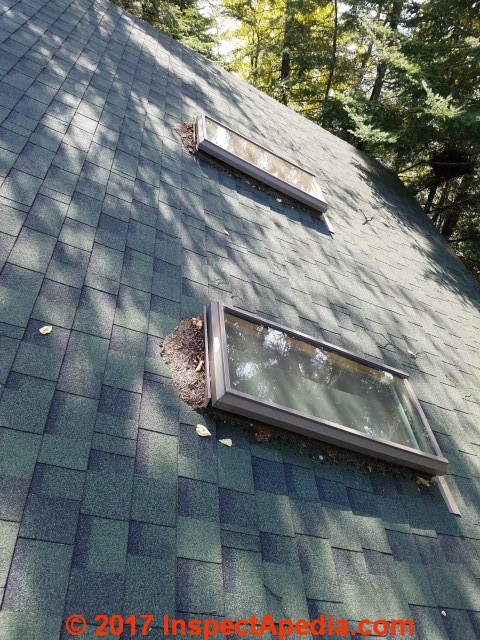It s not a sign of poor home maintenance.
No bacteria growing on roof under windows.
The damage may be imperceptibly slow and minor such as water spots that could.
Downing isn t alone in having streaks on her roof.
The most common bacteria that grow on your roof are moss.
Getting your roof professionally cleaned at least once a year will help keep that bacteria under control and get rid of it so that it doesn t become a breeding ground for algae.
There are over 12 000 types of moss most grown in clumps and release spores into the air.
Humidity moisture and limited sunlight provide moss with the necessary conditions to flourish.
In addition bacteria are a group of unicellular microorganisms which can only be observed under the microscope whereas fungi are mostly complex microorganisms.
Given the right conditions moss can grow almost anywhere on a home s exterior including roofs siding masonry and window glass.
Roof algae generally have a black green hue.
Water content in food also provides an excellent environment for many types of bacteria to grow.
Often referred to as algae growth on the roof the growth typically occurs on the north side or shaded area of the roof.
Common types of roof bacteria.
You may think you have roof algae when really you have moss mildew or mold.
Algae grow most often on wood and asphalt shingles or concrete tiles especially if they do not get a lot of sunlight.
Water damage describes various possible losses caused by water intruding where it will enable attack of a material or system by destructive processes such as rotting of wood mold growth bacteria growth rusting of steel swelling of composite woods de laminating of materials such as plywood and many others.
Get your roof washed regularly.
Bacteria need water to grow and die without a water source.
Roof bacteria can take many different forms.
Bacteria are said to be prokaryotic which means they do not posses nucleus on their cells while fungi are eukaryotic organisms which have a well defined nucleus on their cells.
This is not only time consuming but it can increase the wear and tear on your roof.
This usually happens because of climate change heavy rainfalls or even pollution.
Left to grow moss spreads to window frames and siding where it causes damage to the substrate.
Moss will generally only grown on the shady side of your roof.
Pressure washing and bleach aren t the best options for cleaning green and black algae.
These bacteria often grow because of redundant moisture that remains on the rooftop.
Rather the unsightly dark splotches that streak across roofs are caused by bacteria known as gloeocapsa magma.
Even if you try to remove the algae it can easily grow back because these cleaning methods don t effectively attack the full growth.
No matter how diligent you are there will always be some bacteria that will manage to get on the roof.
You can control the growth of moss on your roof by ensuring that your roof properly drains so that water does not stay on your roof.

